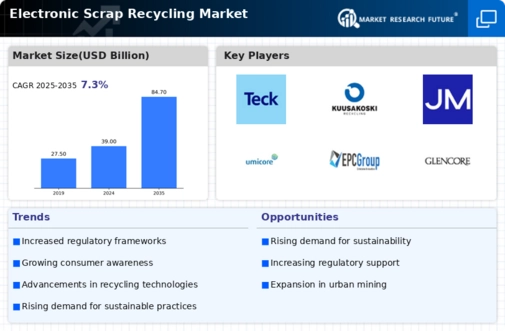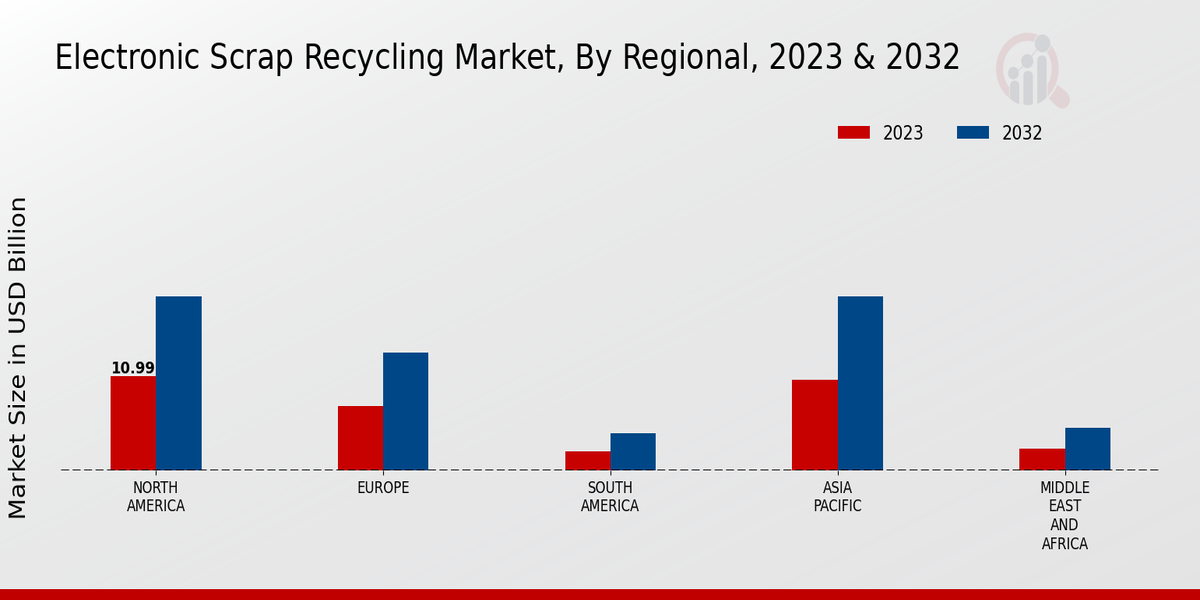Market Trends and Projections
Regulatory Support and Compliance
Government regulations play a crucial role in shaping the Global Electronic Scrap Recycling Market Industry. Many countries have enacted stringent laws to manage e-waste and promote recycling initiatives. For instance, regulations mandating the proper disposal of electronic devices encourage manufacturers and consumers to participate in recycling programs. This regulatory landscape not only fosters compliance but also stimulates market growth. As the industry evolves, companies are likely to invest in sustainable practices to meet these requirements, thereby enhancing their competitive edge and contributing to the overall growth of the market.
Growing Demand for Electronic Devices
The increasing global demand for electronic devices drives the Global Electronic Scrap Recycling Market Industry. As more consumers acquire smartphones, laptops, and other gadgets, the volume of electronic waste generated rises significantly. In 2024, the market is valued at 39.0 USD Billion, reflecting the urgent need for effective recycling solutions. This trend is expected to continue, as the proliferation of technology leads to higher e-waste generation. The industry must adapt to this growing challenge by implementing innovative recycling methods to recover valuable materials from discarded electronics, thereby contributing to a circular economy.
Rising Awareness of Environmental Impact
There is a growing awareness among consumers and businesses regarding the environmental impact of electronic waste, which significantly influences the Global Electronic Scrap Recycling Market Industry. As individuals become more conscious of the ecological consequences of improper e-waste disposal, they are increasingly seeking responsible recycling options. This shift in consumer behavior encourages companies to adopt sustainable practices and invest in recycling technologies. The market is projected to grow at a CAGR of 7.29% from 2025 to 2035, indicating that the emphasis on environmental responsibility will continue to drive demand for effective recycling solutions.
Increasing Investment in Recycling Infrastructure
Investment in recycling infrastructure is a key driver of the Global Electronic Scrap Recycling Market Industry. Governments and private entities are recognizing the need for robust recycling facilities to handle the growing volume of electronic waste. This investment is essential for developing efficient collection, processing, and recycling systems. As the market evolves, enhanced infrastructure will facilitate better recovery of valuable materials, thereby contributing to the overall economic viability of recycling operations. By 2035, the market is expected to reach 84.7 USD Billion, underscoring the importance of infrastructure development in supporting sustainable e-waste management.
Technological Advancements in Recycling Processes
Technological advancements are transforming the Global Electronic Scrap Recycling Market Industry by enhancing the efficiency and effectiveness of recycling processes. Innovations such as automated sorting systems and advanced material recovery techniques enable recyclers to extract valuable components from electronic waste more efficiently. These technologies not only improve recovery rates but also reduce operational costs, making recycling more economically viable. As the industry embraces these advancements, it is likely to attract further investment, thereby supporting the market's growth trajectory and ensuring a sustainable approach to managing electronic waste.












